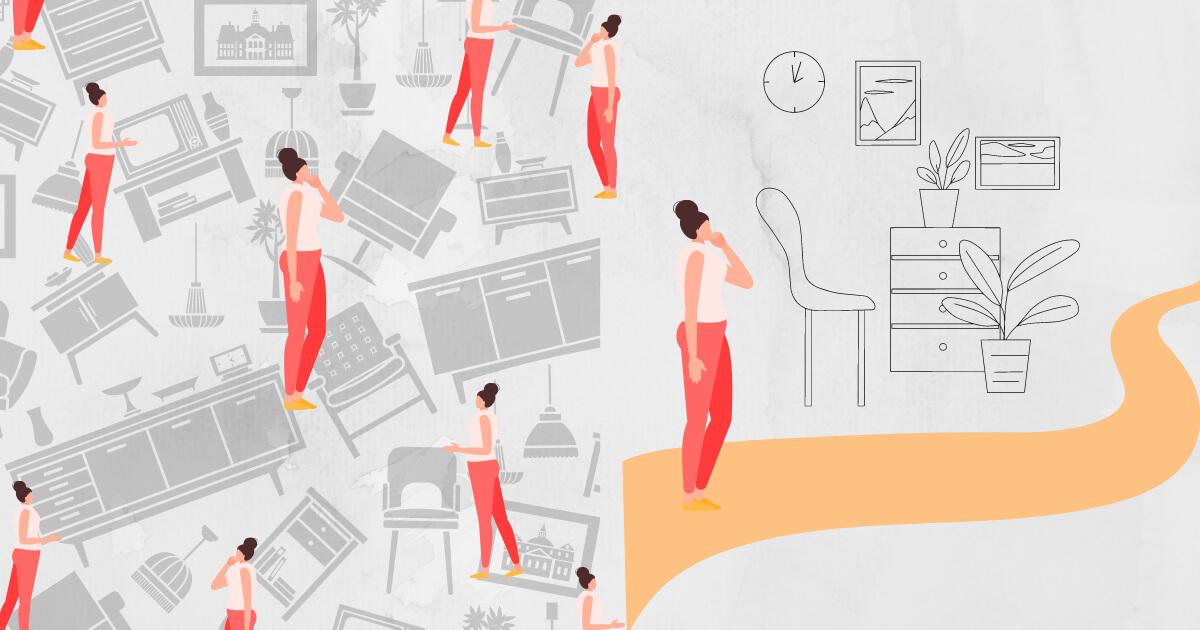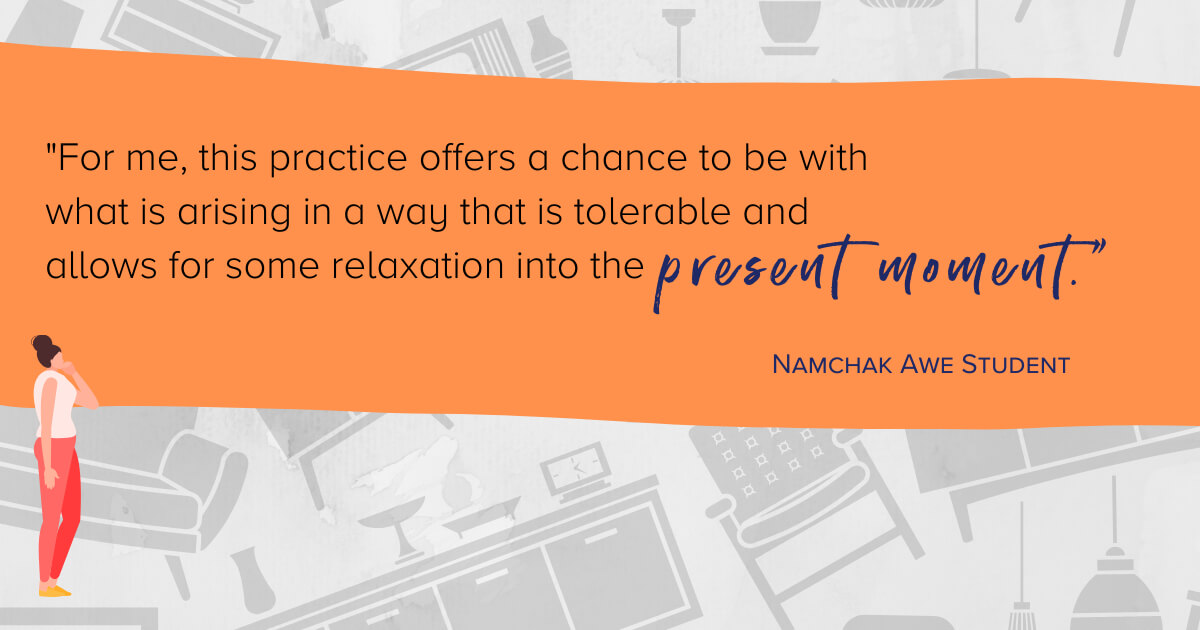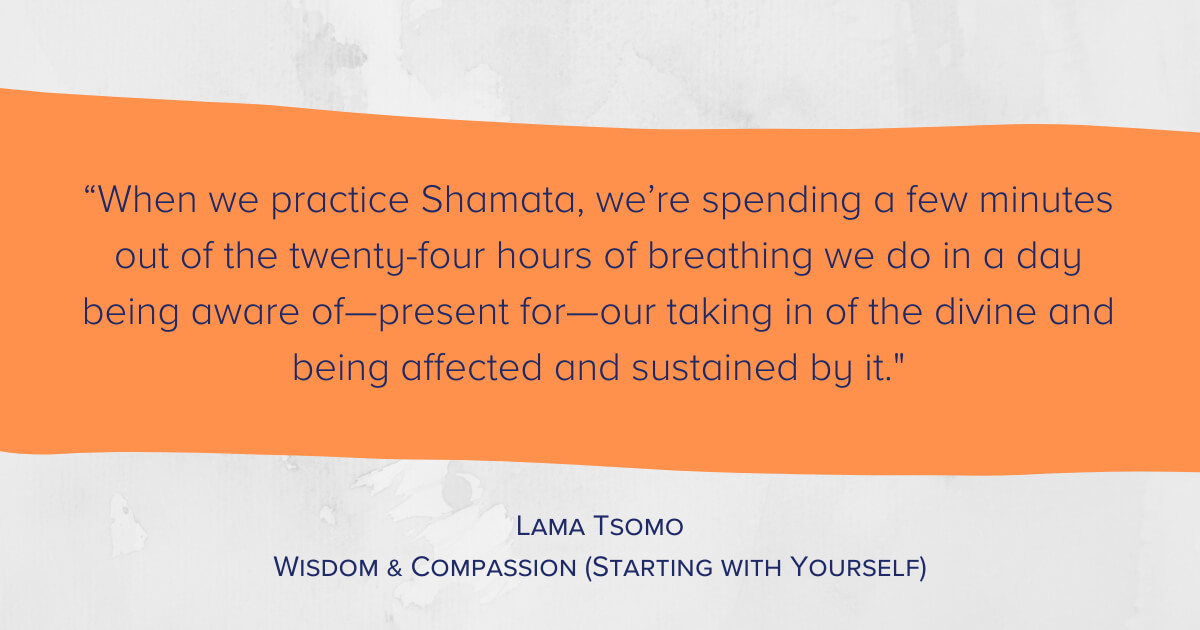Lama Tsomo often uses the metaphor of stumbling around an old, dark attic full of furniture to describe dealing with difficult emotions. She points to psychotherapy as a headlamp that can show one the way around the furniture and allow one to rearrange the room. She adds that Buddhist practices can create a path out of the room, rather than repeatedly rearranging the room. One needs both – a path and rearrangement – to get out of the room. See the full discussion with Lama Tsomo here.

When we meditate, we can see a parade of our thoughts and with practice, allow them to pass through. We learn to let go of the stories that we often attach to certain thoughts and feelings. Typically, life is much more enjoyable and peaceful when we stay grounded in reality. We aren’t proposing that we take on all of our difficult emotions at one time. It may be helpful to allow one difficult emotion out at a time. Then with time and practice, we learn to accept all parts of ourselves. Through working with the disowned parts of ourselves and the feelings around those parts, we can work through the emotions and come to resolution.
The alternative to this type of work is to attempt to keep all difficult emotions stuffed down in the theoretical “basement,” as Lama Tsomo says. As we all have probably experienced, difficult feelings seep out somewhere, often at inopportune times, and usually cause harm to ourselves or a loved one. We’ve yet to find a lock large and strong enough to keep in all difficult emotions. If you discover it, please let us know!
In her recent book, Wisdom & Compassion (Starting with Yourself), Lama Tsomo discusses her own journey of learning to work with uncomfortable and sometimes painful emotions.
“Not only have I spent most of my life separated from experience by my internal monologue, I’ve dampened my emotions to protect myself from feeling. When I was about 13, I thought, “If I could just feel the good things in life and not feel the bad, wouldn’t that be great?” After numbing myself till my life was in black and white, I realized I was living in a state of mild depression. Everything was gray and two-dimensional— like I was looking at life instead of actually living. I would go to the mountains and only experience the beauty and vastness as though I were sipping from a waterfall through a straw. The exquisite mountain was fully there, but I wasn’t.
Through body-centered psychotherapy, I began to feel everything more fully again. Through Tibetan meditation practice, I’ve been able to let go of the unhappy feelings — let go of all lingering thoughts/feelings from the past, conjecture about the future — so that I can REALLY feel what’s happening in the moment. As the saying goes, ‘God is here; where are you?’
When I’m having a difficult interaction with someone, I’m more able to manage my responses and freer to respond more kindly, resourcefully, and ultimately successfully. I’m by no means perfect, but the vast improvement is obvious to me as well as others who have known me for a long time.
But there’s yet another experience that comes with letting go of the top-down way of processing life. We’re no longer prisoners of the self we thought we were. Once we’re operating more from the hub of the wheel, we’re not just a composite of memories and habitual reactions. Those memories are there, but with hours of meditation experience, we don’t identify so tightly with those memories and habitual patterns.”**
Here is another example of the benefits of therapeutic practice and meditation. An AWE (Ancient Wisdom Engaged) Program student recently shared about their journey with anxiety and various uncomfortable emotions. They also found the combination of therapeutic practices and meditation to be helpful.

“As someone on a journey to connect with my body, embodied practices have become part of my daily practice. This can include using the weight of my body against the cushion as an anchor in Shamata practice. I also find refuge in embodied practice when strong emotions, anxiety, or uncomfortable bodily sensations arise. I turn to my body to investigate while contemplating the following questions (credit to my therapist for introducing me to this practice):
- Where is the emotion/sensation located?
- What colour is it?
- What texture is it?
- Is it solid, liquid, or gas?
As I meditate on these questions, I visualize the emotion or sensation, and also place my awareness on its changing nature. Through this practice, I have seen that emotions and bodily sensations are not permanent. They shift and change. For me, this practice offers a chance to be with what is arising in a way that is tolerable and allows for some relaxation into the present moment.”

Meditation Practice That May Help with Anxiety
One may find Shamata and body scan practices helpful in learning to observe feelings rather than grasping them. Lama Tsomo refers to Shamata as a gentle practice.
“When we practice Shamata, we’re spending a few minutes out of the twenty-four hours of breathing we do in a day being aware of—present for—our taking in of the divine and being affected and sustained by it. What better foundation for mindfulness practice? What better ushering-in to the tranquil state we’re seeking?”**
It’s important to note that doing these practices does not guarantee an anxiety-free life. Instead of avoiding or suppressing our difficult feelings, we can learn to bring loving, accepting attention to whoever or whatever shows up in our minds.
Guided Meditation for Anxiety
Six-minute Meditation to Increase Happiness
Three-minute Shamata and Intro to Insight Meditation
Six-minutes of Shamata for Seeing Clearly
Ancient Wisdom for Our Times: Wisdom & Compassion (Starting with Yourself) (pp.26 & 37)*
©2022 Namchak Publishing Company LLC.
Find out more about Wisdom & Compassion (Starting with Yourself)
Looking to meditate with others? Join Learning Circle or attend an online retreat. Learn more about our online retreats HERE.
